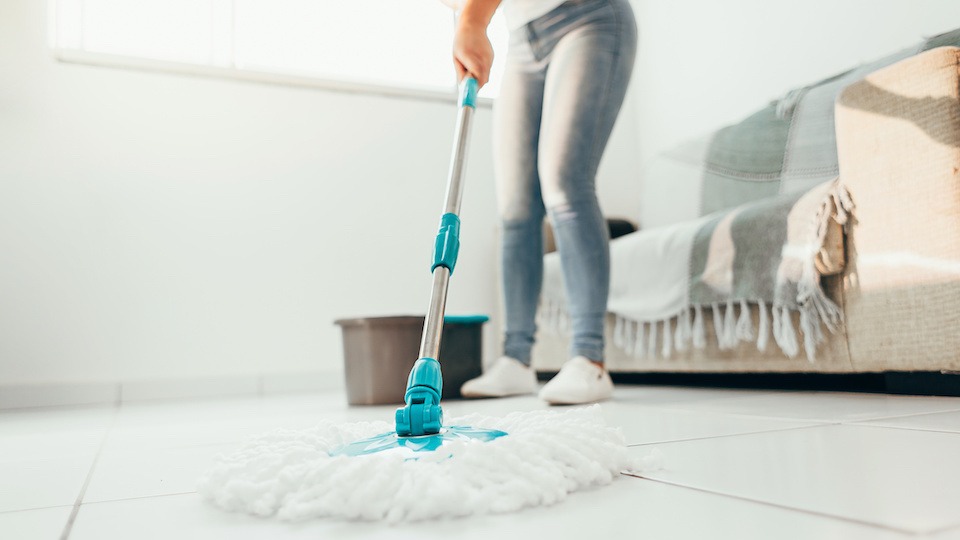With about a third of our lives spent sleeping, you can’t underestimate the power of sleeping on the right pillow. Just like you wouldn’t want to spend your workday walking in shoes that don’t fit properly, you shouldn’t spend your resting time perched on a lumpy and uncomfortable pillow.
According to new research, sleep is one of the most important factors for health and wellbeing. While most of us know the importance of investing in a quality mattress, pillows are often overlooked. With recent advances in sleep technology and new options launching on the market, there’s never been a better time to take stock of how you sleep and what you sleep on.
Do you need a new pillow?
The National Sleep Foundation recommends that pillows should be changed every two years – but the average person keeps using them for 3.2 years. A flattened pillow from too much usage could put strain on your neck, not to mention old pillows gradually build up body oil, dead skin cells, hair, and sweat that attracts dust mites and can trigger allergies. Some pillows – like natural and synthetic down – can be renewed with a machine wash, while others, like foam, cannot – though a pillow protector will help keep them clean and extend their life. Continuing to use a pillow that has lost its shape or molted too many feathers isn’t a good idea.
The most important thing to realize when it comes to choosing pillows is that one size does not fit all. Your sleeping style, mattress type, physical size, and health requirements all play an important role in what pillow you choose. The best course of action is to go into a store and, just as you would for a new mattress, “test-drive” your options. However, it pays to do your research first, so you know what to look for. Here are some tips on choosing the best pillow for a great night’s sleep.
The best profile for your sleep position
The search for the right pillow for you requires you to answer a few questions:
- Are you most comfortable on your back, your front, or your side?
- Which position makes it easiest for you to fall asleep?
- How are you usually positioned when you wake up?
Each different sleep position has an optimal pillow profile, which can help support comfortable sleep.
- Front or stomach sleepers should choose a reasonably flat, soft pillow to keep the spine in its natural position. Select from low-loft plush pillows such as soft polyester fills, extra soft natural down, or even thin foam fills.
- Back sleepers should choose a medium-height pillow to prevent pushing the head forward, so the natural curve of the neck is maintained. Opt for high-fill down pillows, orthopedic memory foams, or medium synthetic pillows for the most comfortable sleep experience.
- Side sleepers often benefit from a thicker, firmer pillow that supports the neck. You’re looking for a firm and high pillow that fills the distance between your ear and the shoulder. Opt for a traditional or contoured memory foam pillow, or latex pillows designed for side sleepers. These will continue to provide support as they will not flatten as easily as the polyester or down varieties. Side sleepers should also place a soft pillow between their knees to keep the upper hip aligned while sleeping.
- If you change your sleeping positions through the night, the safest option is to go with a high-fill down pillow or a medium synthetic pillow.
Choosing the right pillow material
Regardless of your sleep position, you may have a preference for a certain type of pillow filling based on other properties. Here is a brief breakdown of the different fills available and the pros and cons of each:
Wool and cotton pillows
Natural wool and cotton pillow fillings are good options for those with allergies, as these materials are not susceptible to dust mites or mold. However, these fibers are typically quite firm and prone to absorbing heat and tend to flatten over time.
Memory foam pillows
Memory foam molds to the body in response to heat and pressure, evenly distributing body weight and improving circulation. This supportive fill is known to reduce sleep apnea and snoring, promote normal curvature of the spine, and reduce pressure points, all ensuring a better night’s sleep.
Latex pillows
Latex is a sustainable and renewable resource, harvested from the rubber tree. It is inherently non-allergenic, anti-microbial, and resistant to bacteria, moisture, and dust mites. These pillows stand up to many years of use.
Down and feather pillows
Down and feather pillows are a soft, natural product harvested from ducks and geese. Down and feather pillows are soft, lightweight, and durable. The filling molds to your head and neck, providing support and comfort. Be sure to purchase a feather pillow that has been ethically produced with animal welfare in mind.
Microfiber pillows
Microfiber is a modern synthetic fiber that is air-blown into the pillow casing, promoting good loft and softness. Microfiber is designed to emulate the characteristics and feel of down but with the added benefit of easy maintenance. Allergy sufferers and children often prefer this pillow type as they are dust-mite resistant and machine washable.
Tencel pillows
Tencel is a modern fiber made from the pulp of the Eucalyptus tree. Because of its moisture-wicking properties, it is excellent for hot and sweaty sleepers. Tencel pillows are machine washable and can be tumble dried.
Buckwheat pillows
Buckwheat pillows have become trendy in recent years due to their natural and sustainable filling. These pillows are filled with the outer casings of buckwheat kernels and are known for their advanced support, breathability, and comfort. Most buckwheat pillows allow the user to adjust the firmness and height of their pillow by adding or removing buckwheat hulls from the pillow.
Polyester pillows
Polyester pillows are cost-effective and come in a variety of fill weights, which make them higher or lower so that you can get the right profile. These pillows tend to hold heat but are still great for those on a budget, or for those who just need to fill decorative pillowcases for dressing a bed.
Water pillows
Remember waterbeds? Now there are water pillows. They typically contain water along with another fill material, such as memory foam or polyfill. Most water pillows require customers to fill the pillow with water themselves, allowing for adjustable firmness levels. Water pillows are known for being supportive and cooling.
What’s in a pillowcase?
No matter what type of pillow you chose, you will also need to decide what to put it in. While many of us just use the same old pillowcases we’ve had for years, there are actually different types and materials that could make or break your night of sleep. Pillowcases are often overlooked, but they’re an essential part of a bedding set, protecting both the pillow itself and your skin. Finding the right pillowcase and caring for it properly can not only help extend the life of your pillows, but could help you get a better night’s sleep as well.
It’s also important to consider the thread count of your cover, especially if you have down or feather fills. The general rule is that the higher the thread count, the more hard-wearing the cover and the less chance for down to escape or impurities to get in. Speaking of impurities, some pillow covers may have anti-bacterial, anti-microbial, or stain-resistant properties that make them great for allergy sufferers. Charcoal and copper-infused fabrics are the latest developments in this area.
Natural fabrics, such as cotton, flannel, and linen are probably the most common pillowcase materials, since they are affordable, soft, and absorbent. While these properties come in handy for your bath towels, these natural fabrics might not be ideal for your bedding. Our bodies naturally lose moisture and oils as we sleep, which end up being absorbed into our pillowcase. This causes friction, and our skin sticks to the fabric, which can lead to creases and lines and wrinkles in the skin overtime. In addition, the buildup of sweat and oil in the fabric can cause or worsen acne.
On the other hand, bamboo pillowcases are popular due to the natural benefits of soothing, comforting bamboo fabric. This material is moisture-wicking and inhibits the growth of odor-causing bacteria. Bamboo pillows allow sensitive sleepers to rest soundly since bamboo is a naturally hypoallergenic pillow cover.
Silk pillowcases have also recently become more popular thanks to their hair and skin-friendly properties. Experts say a silk pillowcase can help reduce wrinkles and keep hair from getting tangled during sleep. The fabric also feels cool on the skin and regulates moisture. Consider investing in a silk pillowcase for a comfortable sleep and anti-aging benefits.
Other factors to consider when choosing a pillow
If you’re still looking for the perfect pillow, there are a number of other factors to take into account when making your selection.
- Loft: The term ‘loft’ refers to a pillow’s height or thickness.
- Firmness: Firmness affects how a pillow feels, as well as how high it holds your head.
- Price: Pillows are available at nearly every price point, generally determined by the pillow’s materials and construction.
- Pressure Relief: Like mattresses, pillows can be pressure-relieving or can create pressure points, which cause or relieve neck pain depending on your unique needs.
- Temperature Regulation: Like mattresses, some pillows sleep cooler than others. This could be an important consideration if you tend to get hot while you’re sleeping. For example, buckwheat hulls are known to feel exceptionally cool, while memory foam pillows can trap heat.
Do you need a specialty pillow?
While the pillow selection process may seem overwhelming, this last element is probably one of the most important. If you have special health requirements, you should make sure that the pillow you select if suited to your needs.
If you have any injuries or chronic pain, consider pillows designed to relieve pressure on your neck, joints, and spine. For example, you might choose to incorporate an extra-long body pillow that can be placed between your legs for hip and lower-back support. This is especially useful during pregnancy or if you suffer from hip pain at night. Wedge-shaped pillows can also be useful for pregnant women and those who suffer from reflux.
Sometimes, a standard pillow isn’t enough for sleep apnea sufferers. That’s especially true for people who use a CPAP machine to manage their sleep disorder. Sleep apnea pillows may help provide a more comfortable position for those who wear a CPAP mask to bed.
Another condition requiring a special pillow could be allergies, whether they are related to the skin or the respiratory system. There are many hypoallergenic pillows and pillow covers available for allergy and asthma sufferers. Since dust mites, mold, and mildew are what generally bother people with allergies, pillows that do not retain moisture are the best for allergy sufferers.
Overall, high-quality materials, advanced design, and modern manufacturing processes mean that good pillows can be expensive. But when you wake up refreshed and relaxed, you’ll be glad you invested the time and money in choosing the best pillow for your needs.
-The UpWellness Team









